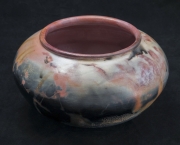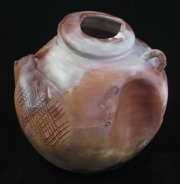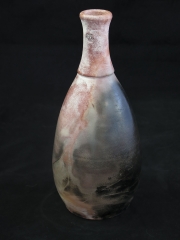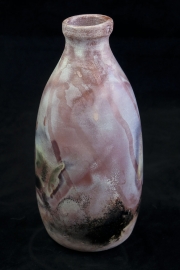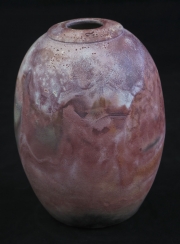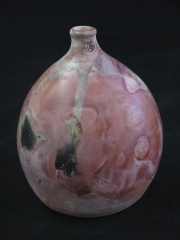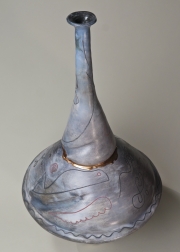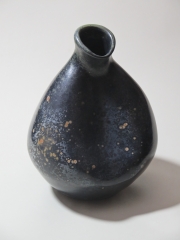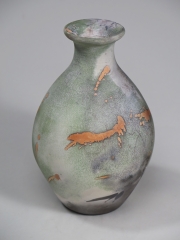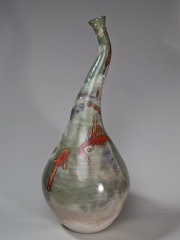Examples of Saggar-Fired Pieces
Some of these saggar pieces may still be available I have included them here to show the type of work that I am doing. If you hover the cursor over the thumbnail, the image name will display.
If you contact me with the name, I can tell you if the piece is still available or if I have something similar.
The Process
The saggar is a container in which a single piece of pottery is fired. Multiple saggars may be placed in a kiln for firing. Organic materials, chemicals and metal (e.g. strands of steel wool) can be placed inside the container. These materials will combust during firing, the resulting fumes “decorate” the piece and the saggar container isolates the fumes from other ware in the kiln. The fuming leads to unpredictable and sometimes stunning results. These pieces are decorative and not used for food or water.
Typically a piece of greenware (unfired pottery) is coated with terra sigillata (a solution of very fine/small particles of clay). This gives the piece an almost glass-like sheen (this is not a glaze) and emphasizes the patterns and coloration that results from the saggar firing. After the firing, the piece is treated with a clear acrylic finish or a hard wax. This will prevent the decorative effects from oxidizing.
Care And Use
These pieces are strictly decorative and not intended for food or liquid use because they are not fired to vitrification – where clay turns into a glass-like substance. Because of this, it is more fragile than regular pottery and the clay remains porous (water will seep through it). The glazes and chemicals used to decorate the piece may be prone to leach and this means these pieces are not intended to hold food.
The pieces should not be left for extended periods of time in direct sunlight – this may cause the colors to fade. To protect the pieces from oxidation I apply a clear acrylic coat or a wax coat.
All of the above applies to saggar and pit-fired pieces.
